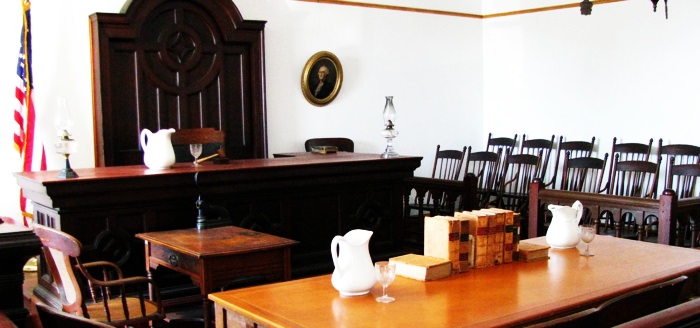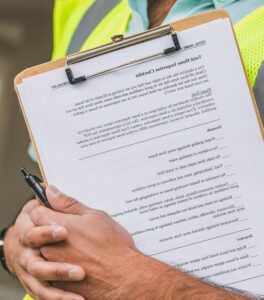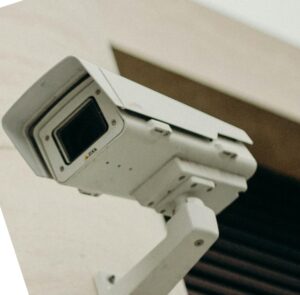Before I get into a full FAQ regarding bankruptcy, I think the first question I should answer is the very common one – what is bankruptcy?
Bankruptcy is a process that allows a person who’s in debt to wipe out or manage many consumer debts. It is actually authorized by the US Constitution. There are two types of bankruptcies:
- Chapter 7 is mainly for debtors with unsecured debts. An unsecured debts means that there is no collateral such as a home or a car that secures the payment of the debt obligations. Common unsecured debts include medical bills and credit card bills. Chapter 7 debtors can reaffirm some debts such as a car loan if the consumer, the creditor and the bankruptcy court approve.
- Chapter 13 is known as a reorganization plan. It is for debtors who want to manage their debt. Usually, Chapter 13 debtors want to try to save some key asset such as a home or a car. Essentially, the debtor will agree to pay the arrears on all unsecured bills for a period of 3 to 5 years. During this time frame, the debtor will also keep up the monthly payments on the secured assets. The debtor also has to agree to use the disposable income (income after normal living expenses are paid) to pay off the unsecured creditors. Usually unsecured creditors get paid a small percentage on the dollar.
What are the key elements of any bankruptcy case?
Before filing the Chapter 7 or Chapter 13 bankruptcy, it is good practice to consult with a bankruptcy attorney. The attorney will explain the key stages of a bankruptcy:
- In both Chapter 7 and Chapter 13 cases, the debtor will file a bankruptcy petition. The filing of the petition acts as an automatic stay to stop all collection activities.
- The debtor will need to submit to a means test. This test examines the amount of income the debtor has and the debtor’s family size and location to determine if the debtor can file a Chapter 7 or must file a Chapter 13 bankruptcy.
- The debtor will need to verify that he or she has taken an approved credit counseling course. These courses are usually available online. Courses are also available in-person.
- The petition will include many forms that need to be completed. The main forms, known as schedules, require that the debtor identify all of his or her assets. The debtor must also identify all of the debts and indicate which debts are secured and which debts are not secured.
- A trustee’s meeting also known as a 341 meeting will be held. In both Chapter 7 and Chapter 13 bankruptcies, the debtor will need to be appear at a hearing before the US bankruptcy trustee assigned to the case. The creditors can show up at the meeting but often rely on the trustee to take care of their interests. At the hearing, the trustee will ask the debtor a number of standard questions that the bankruptcy lawyer will know. The questions are usually straightforward and not hard to answer.
- The debtor will be discharged. In a Chapter 7, the debtor will be discharged usually a short time after the creditor’s meeting. In a Chapter 13, the debtor will be discharged after the terms of the 3 to 5 year period are completed.
Can all debts be discharged?
No. Unsecured debts will normally be discharged in a Chapter 7. In a chapter 13, the unsecured creditors will be paid a small amount each month for a 3 to 5 year period. Some debts cannot be discharged through bankruptcy.
These debts include certain priority debts such as child support, alimony, school loans and fraudulent debts.
What is the Means Test?
This requirement was enacted in 2005. It is a way to force debtors who have above average income to pay off some of their debts. The bankruptcy means test looks at a debtor’s income, family size and geographical location.
A formula is then used to compare the debtor’s income to the median income average for similar sized families living in the same area.
Debtors who fall under the median can file a Chapter 7 bankruptcy. Debtors who have income above the median may still qualify if they can meet additional tests.
If the debtor fails the means test, then he or she is required to file a Chapter 13 bankruptcy.
What is the Automatic Stay?
The automatic stay is a way to provide immediate relief to debtors. Many debtors get harassing calls from collection agencies. They worry about answering the phone or checking their mall because a collector may be pursuing them.
Creditors may be trying to get a judgment against a debtor or trying to enforce a security interest by repossessing an asset. The automatic stay immediately stops all collection activities as soon as the bankruptcy petition is filed. Any creditor who wants relief from the automatic stay must seek approval from the bankruptcy court.
What are Personal Exemptions?
Federal and state laws allow debtors to keep some of their property even after their bankruptcy is discharged. It is a way to give the debtor some funds and some small assets so that a fresh start can be made. The federal bankruptcy laws include exemptions for the equity in a home, a car, tools, jewelry and many person possessions.
It is not a blanket exemption. Each category of personal asset is assigned a dollar value. If the value of the asset is less than the exemption, then the debtor can keep the asset. If the asset is subject to a security interest, then the issue of the personal exemption becomes a little trickier.
An bankruptcy attorney can explain how exemptions and secured assets work. The Federal bankruptcy law also has a wildcard exemption that lets the debtor use the unused portion of the homestead exemption to save even more assets.
What are Some of the Pros and Cons of Bankruptcy
Bankruptcy can be a great tool for many debtors. It allows many debtors who have run into financial difficulty a chance at a new start. Many unsecured debt obligations can be eliminated or significantly reduced.
Many secured transactions such as home mortgages and car loans can be managed in such a way as to allow the debtor to keep a home, a car or professional tools. All debtors should review exactly what a bankruptcy can and cannot do with a bankruptcy attorney before considering filing.
Some of the main advantages of filing for bankruptcy
The first real advantage is that the filing of the bankruptcy petition results in an automatic stay of any collection activities. This means that creditors who are trying to get a judgement or a lien must stop what they are doing immediately.
Mortgage companies who are trying to foreclose your home must stop immediately. Car companies cannot repossess your car. Collection action companies must stop calling you at home or work and must stop sending collection letters.
The automatic stay takes a lot of stress out of your debt situation and gives the debtor a full chance to examine all of his or her financial options without the worry of legal action or the fear of answering the phone.
Bankruptcy can eliminate most credit card debt and medical debt obligations. Debt that is not secured can be liquidated completely in a Chapter 7 bankruptcy and mostly in a Chapter 13 bankruptcy. The key is that the debt has to be unsecured. That means a creditor does not have a legal interest in any collateral or any assets through a secured transaction or through a lien. Mortgages are a common example of a secured debt. If the debtor does not pay the debt, then the entity that holds the mortgage can go after the home to make sure it gets paid.
An ability to save assets
Most debtors are concerned about their home and car. Chapter 7 has a remedy called a reaffirmation agreement that lets a debtor wipe out his or her unsecured bills and still keep the home or car. The key is that the debtor, creditor and bankruptcy court all agree that the debtor can keep the asset as long as the bills are paid on time.
The concern the court will have is whether the debtor is really in a position to pay the bills even after the other debts are discharged. Chapter 13 lets the debtor keep the home, car and other secured assets by entering into a reorganization plan which requires that the debtor pay all the arrears on the secured loan to the bankruptcy trustee over a 3 to 5 year period and also keep up all new regular payments.
Some Assets Cannot Be Seized
The federal bankruptcy laws do protect certain assets. Social Security and pension funds are normally protected from seizure by the bankruptcy trustee or a creditor. Other assets such as personal injury awards may be safe too.
Some assets are considered exempt. Many personal assets can be saved if the value of the asset is less than the value of the personal exemption. For example, a car that is worth $2,000 can be saved because the federal personal exemption for cars is $3,675.
Some of the key disadvantages to filing for bankruptcy
Debtors must pass a means test. This means if they earn more than the median for their family size and location, they must file a Chapter 13 bankruptcy – and pay off some of their unsecured debt obligations.
Debtors cannot get rid of secured debt obligations. If a creditor lent money to someone but required that they secured the debt by putting up his or her collateral, then the creditor will have the right to ask the trustee to seize and sell the asset so the secured debt can be paid.
There are some beneficial considerations though. If a debtor has several secured debts but only the original debt has any real value, then the debtor can likely eliminate the secured debt that is worthless. For example, if a home is worth $100,000 and the person owes $100,000 to the original mortgage holder, than second and third mortgage holders will not have any interest in the home. The debtor can usually eliminate the second and third mortgage holders.
Some debts cannot be discharged in bankruptcy
The federal bankruptcy laws wanted to make sure that certain obligations had priority – that the debtor had to pay for these obligations no matter what.
- These obligations include child support and alimony. Debtors must pay these family obligations if they file either a Chapter 7 bankruptcy or a Chapter 13 bankruptcy.
- Student loans cannot be discharged either unless the debtor can show that he or she is never really likely to be able to pay off these debts because of extenuating circumstances.
- Tax obligations usually cannot be eliminated although a Chapter 13 bankruptcy can allow the debtor more time to pay off their obligations.
- There are many other debts that cannot be discharged such as an obligation to pay someone when the debtor caused an accident while intoxicated or under the influence of alcohol.
- Debts incurred through fraud or a violation of criminal laws.
What is an Involuntary Bankruptcy?
Most bankruptcy petitions are filed voluntarily by a consumer who cannot meet his or her debt obligations. Voluntary petitions are usually filed by a debtor who needs to get a fresh start. Federal bankruptcy law does, however, let creditors force a debtor into bankruptcy involuntarily. Involuntary bankruptcies are rare but they do happen. Usually the debtor has a business in an involuntary bankruptcy.
Situations where an Involuntary Bankruptcy may occur?
The main situation is where a person has a lot of assets that can be used to pay off the debt. This usually applies to business debtors who have business assets but it can apply, though rarely, to individual debtors too.
The advantage for the creditor is that if there are real valuable assets, then the creditor or creditors can seize the assets in order to get paid. Often times, the threat of an involuntary bankruptcy will be used to force the debtor to begin making payments.
Is there ever a disadvantage to the creditor?
The disadvantage for the creditor is that, especially in business bankruptcy cases, the debtor needs the assets to generate income. For example, if a debtor has inventory to sell, then the only real way to make the money is to sell the inventory. The creditor who seizes the inventory is often in a worse position because the creditor or trustee in bankruptcy doesn’t have the same means to sell the inventory. Selling inventory requires a place to store the inventory, insurance against risk on the inventory, marketing and advertising, and a network to help sell the inventory.
Involuntary bankruptcy petitions are most often filed when there is ongoing fraud and the bankruptcy is a way to stop the fraud.
The Involuntary Bankruptcy Process
By definition, the debtor is not filing the bankruptcy petition. Rather a creditor (or a combination of creditors) files the petition in the federal bankruptcy court. The debtor essentially has two options:
- Option one is to not respond. If the debtor does not respond in a set number of days (usually 20 or 21), then the creditors will be able to force the bankruptcy and require the debtor to disclose his or her assets.
- Option two is to respond by requesting a hearing in bankruptcy court. Here the judge will hear testimony and review evidence from the creditors and the debtor. The judge can then authorize that the involuntary bankruptcy petition proceed or the judge can dismiss the petition and order the creditors to pay the court costs and attorney’s fees. Because of the chance of being liable for court costs and legal fees, many creditors hesitate to file an involuntary bankruptcy petition.
If the bankruptcy petition was filed in bad faith, then the creditors may be accountable for actual damages and also for punitive damages.
Additional restrictions on involuntary bankruptcies
There must be a certain number of creditors and a certain amount of unsecured debt before creditors can force an involuntary bankruptcy. Basically the amount that is owed to all the unsecured creditors must be at least $15,325. If there are many creditors (over 12), then a certain number (usually three) must agree to force the involuntary bankruptcy.
The debt is to be known. It cannot, for example, be based on a lawsuit which has not yet resulted in a judgment.
Involuntary bankruptcy cases can only be filed through a Chapter 7 or Chapter 11 bankruptcy for consumer debtors and/or business debtors.
A debtor who faces an involuntary bankruptcy should review all the applicable options with a bankruptcy lawyer. These options may include making arrangements to pay off some of the unsecured debt, effective use of personal exemptions and other legal remedies.
Some differences from voluntary bankruptcies
- The debtor can continue operating its business, including buying and selling of assets.
- The petition does not act as a formal petition until after the initial court hearing decision.
- A trustee in bankruptcy is not automatically appointed. Rather a trustee is appointed on motion by a creditor and after a hearing takes place.
- The debtor can agree to the involuntary petition by filing his or her own voluntary petition which normally gives the debtor more control over the proceedings.






Be First to Comment